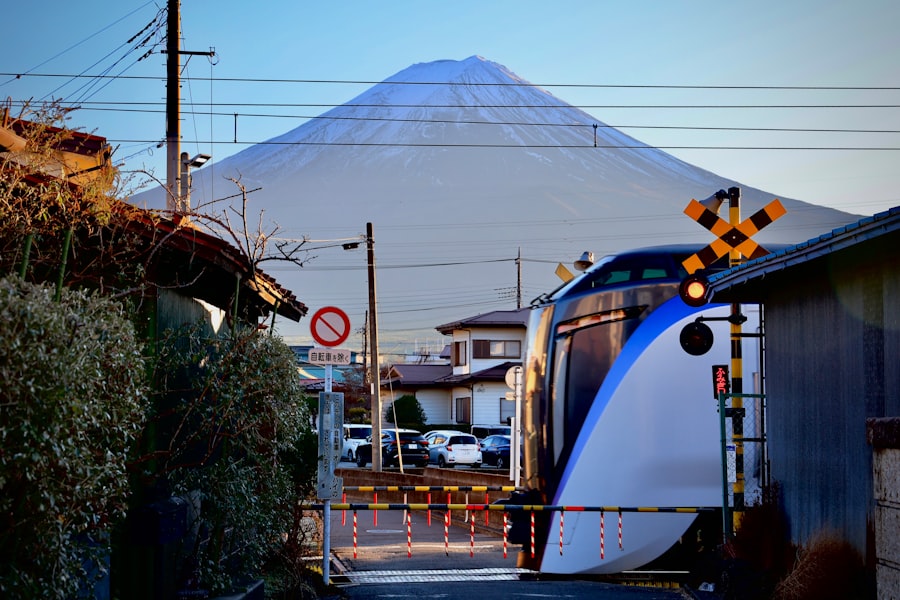
Japan, an archipelago located in East Asia, is a nation steeped in rich history and vibrant culture. Comprising over 6,800 islands, the four largest—Honshu, Hokkaido, Kyushu, and Shikoku—house the majority of the population and are the focal points of economic and cultural activities. The country is renowned for its unique blend of ancient traditions and cutting-edge modernity, making it a fascinating destination for travelers and scholars alike.
With a population of approximately 126 million, Japan is characterized by its distinct regional identities, each contributing to the overall tapestry of Japanese culture. The Japanese language, with its intricate writing systems of kanji, hiragana, and katakana, reflects the complexity of the culture itself. The nation’s history is marked by periods of isolation and openness, with influences from neighboring countries such as China and Korea shaping its development.
The Meiji Restoration in the late 19th century marked a significant turning point, as Japan rapidly industrialized and emerged as a global power. Today, Japan stands as a testament to resilience and innovation, where ancient temples coexist with skyscrapers, and traditional arts thrive alongside modern technology.
Key Takeaways
- Japan is a country with a rich history and a unique blend of tradition and modernity.
- Historical and cultural sites in Japan include ancient temples, castles, and traditional villages.
- Japan is home to stunning natural wonders such as Mount Fuji, cherry blossom trees, and beautiful gardens.
- Modern cities in Japan are known for their advanced technology, futuristic architecture, and bustling urban life.
- Traditional Japanese cuisine is famous for its fresh ingredients, delicate flavors, and unique dining customs.
- Japanese festivals and traditions, such as cherry blossom viewing and tea ceremonies, offer a glimpse into the country’s rich cultural heritage.
Historical and Cultural Sites
Japan is home to an array of historical and cultural sites that offer a glimpse into its storied past. One of the most iconic landmarks is Kyoto, once the imperial capital for over a thousand years. The city boasts numerous UNESCO World Heritage Sites, including Kinkaku-ji, or the Golden Pavilion, which is adorned with gold leaf and surrounded by serene gardens.
Visitors can also explore Fushimi Inari Taisha, famous for its thousands of vermilion torii gates that wind through the sacred Mount Inari.
Another significant historical site is Hiroshima, which serves as a poignant reminder of the impact of war.
The Hiroshima Peace Memorial Park commemorates the victims of the atomic bombing in 1945 and features the Atomic Bomb Dome, a UNESCO World Heritage Site that remains as a symbol of resilience and hope for peace. The park invites visitors to reflect on the consequences of conflict while promoting a message of reconciliation. Similarly, Nara, Japan’s first capital, is home to Todai-ji Temple, housing a colossal bronze Buddha statue that exemplifies the grandeur of ancient Japanese architecture and religious devotion.
Natural Wonders and Landscapes

Japan’s diverse geography offers an array of natural wonders that captivate both locals and tourists. Mount Fuji, an iconic symbol of Japan, stands majestically at 3,776 meters and is revered for its symmetrical cone shape. This stratovolcano is not only a popular climbing destination but also a source of inspiration for countless artists and poets throughout history.
The surrounding Fuji Five Lakes region provides stunning views and recreational opportunities, including hiking, fishing, and camping. The beauty of Mount Fuji is particularly enchanting during cherry blossom season when the pink blooms contrast against the snow-capped peak. In addition to its mountains, Japan boasts breathtaking coastlines and lush forests.
The Ogasawara Islands, often referred to as the “Galapagos of the Orient,” are a UNESCO World Heritage Site known for their unique biodiversity and pristine beaches. These remote islands are home to various endemic species and offer opportunities for eco-tourism activities such as snorkeling and whale watching. Furthermore, the Japanese Alps provide stunning landscapes with their rugged peaks and picturesque valleys, attracting outdoor enthusiasts year-round for skiing in winter and hiking in summer.
Modern Cities and Technology
| City | Population | Smart Technology | Sustainability |
|---|---|---|---|
| New York | 8.4 million | Smart traffic lights | Solar-powered buildings |
| Tokyo | 9.3 million | Smart public transportation | Waste recycling programs |
| London | 8.9 million | Smart energy grids | Green spaces and parks |
Japan’s urban centers are a testament to its technological advancements and modern lifestyle. Tokyo, the capital city, is one of the most populous metropolitan areas in the world, characterized by its bustling streets, neon lights, and innovative architecture. The city seamlessly blends tradition with modernity; ancient shrines like Meiji Jingu coexist alongside futuristic structures such as the Tokyo Skytree, which stands at 634 meters tall and offers panoramic views of the sprawling cityscape.
Osaka is another vibrant city known for its culinary scene and entertainment options. The Dotonbori district is famous for its street food culture, where visitors can indulge in local delicacies such as takoyaki (octopus balls) and okonomiyaki (savory pancakes). Additionally, Osaka is home to Universal Studios Japan, attracting millions of visitors each year with its thrilling rides and attractions based on popular films.
The integration of technology in daily life is evident in Japan’s efficient public transportation system, particularly the Shinkansen or bullet trains, which connect major cities at remarkable speeds while maintaining punctuality.
Traditional Cuisine and Dining
Japanese cuisine is celebrated worldwide for its emphasis on fresh ingredients, seasonal flavors, and meticulous presentation. Sushi, perhaps the most recognized dish outside Japan, showcases the artistry involved in preparing raw fish paired with vinegared rice. Sushi chefs undergo years of training to master their craft, ensuring that each piece is not only delicious but also visually appealing.
Each region in Japan boasts its own unique ramen style, from tonkotsu (pork bone broth) in Fukuoka to miso ramen in Hokkaido. Dining in Japan extends beyond mere sustenance; it is an experience steeped in ritual and etiquette.
Kaiseki dining represents the pinnacle of Japanese culinary art, featuring multiple courses that highlight seasonal ingredients presented with exquisite attention to detail. This multi-course meal reflects the philosophy of harmony between nature and cuisine. Additionally, izakayas—casual pubs—offer a more relaxed dining atmosphere where patrons can enjoy small plates paired with sake or beer.
The communal aspect of izakaya dining fosters social interaction and embodies the Japanese spirit of hospitality.
Unique Japanese Festivals and Traditions

Japan’s cultural calendar is filled with unique festivals that celebrate seasonal changes, historical events, and local traditions. One of the most famous festivals is Hanami, which marks the arrival of cherry blossom season in spring. During this time, people gather in parks to appreciate the fleeting beauty of cherry blossoms while enjoying picnics beneath the blooming trees.
This tradition reflects a deep appreciation for nature’s transience and has been celebrated for centuries. Another notable festival is Gion Matsuri in Kyoto, held throughout July to honor the deities believed to protect the city from plague. The festival features elaborate floats adorned with intricate designs that parade through the streets during the grand procession on July 17th.
Participants don traditional yukata garments while engaging in various cultural activities such as traditional music performances and food stalls offering local delicacies. In winter, Sapporo hosts the Sapporo Snow Festival, showcasing stunning ice sculptures that attract visitors from around the world. This festival highlights Japan’s ability to transform seasonal challenges into artistic expressions.
Each festival not only serves as entertainment but also reinforces community bonds and preserves cultural heritage through generations. Japan’s multifaceted identity encompasses historical depth, natural beauty, modern innovation, culinary excellence, and vibrant traditions. Each aspect contributes to a rich cultural landscape that continues to evolve while honoring its roots.
As visitors explore this remarkable nation, they are invited to engage with its diverse offerings—each experience revealing another layer of what makes Japan truly unique.
If you’re intrigued by the diverse and fascinating aspects of different countries, you might enjoy exploring more about the Cayman Islands after reading about Japan. The Cayman Islands offer a unique blend of natural beauty and modern luxury, much like the scenic contrasts you find in Japan. From stunning beaches to rich cultural experiences, the Cayman Islands have a lot to offer. Discover more about this captivating destination in the article Cayman Islands Facts and Places to Visit. This could be a great next read for those interested in expanding their knowledge of global destinations.
FAQs
What are some interesting facts about Japan?
Japan is an island nation in East Asia, known for its rich culture, advanced technology, and delicious cuisine. It is also home to the world’s oldest company, founded in 578 AD, and has the highest life expectancy in the world.
What are some famous places to visit in Japan?
Some famous places to visit in Japan include Tokyo, the bustling capital city; Kyoto, known for its traditional temples and gardens; Hiroshima, a city with a tragic history and a message of peace; and Mount Fuji, the country’s highest peak and a symbol of Japan.
What are some must-see sights in Japan?
Some must-see sights in Japan include the historic temples and shrines of Kyoto, the bustling Shibuya Crossing in Tokyo, the serene bamboo groves of Arashiyama, and the iconic torii gate of Itsukushima Shrine in Miyajima.
What is the food like in Japan?
Japanese cuisine is known for its fresh and seasonal ingredients, as well as its emphasis on presentation. Some popular dishes include sushi, sashimi, ramen, tempura, and yakitori. Japan is also famous for its tea culture, with matcha being a popular choice.
What are some traditional customs and practices in Japan?
Some traditional customs and practices in Japan include bowing as a form of greeting, removing shoes before entering a home or certain establishments, and participating in tea ceremonies. The country also has a strong emphasis on respect for elders and social harmony.



